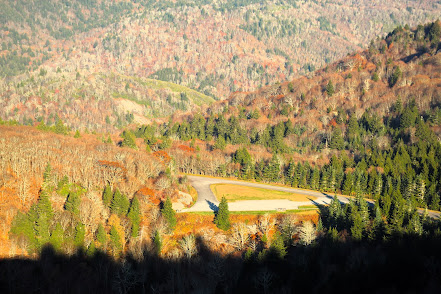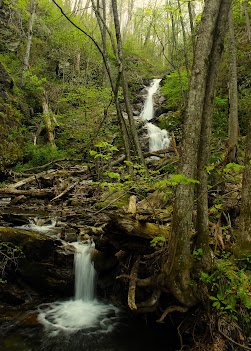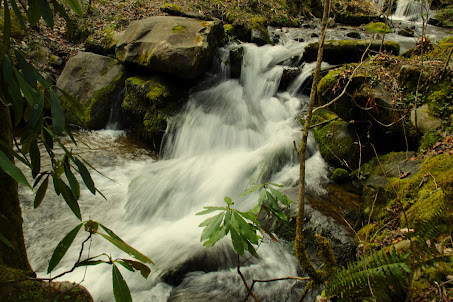My Wild Explorations
I find connection in nature, history and spirituality
Saturday, October 26, 2024
Devil's Courthouse: Beauty Amidst Devastation
Monday, May 27, 2024
Strawberry Gap Trail: Something new to preserve something old
Sunday, April 21, 2024
Beech Creek: You Can't Get There From Here
The Beech Creek Loop is a hike that's been on my radar for a couple of years. Weather, timing, seasons and other factors have delayed it but the stars finally aligned. One issue was that it is a long drive. Despite being in the Southern Nantahala Wilderness in North Carolina, the only way to reach the trailhead is by dipping down into North Georgia and driving back up into North Carolina. It is a truly remote area.
.
Tuesday, March 19, 2024
Injun Creek: The Return
After a prolonged hiatus, I have returned to the blogsphere. My last hike that I blogged about was a grueling endeavor done on what I learned was a partially torn tendon in my ankle. I had to go through physical therapy and get orthotic inserts before I could do any hiking. And since then, I can not attempt the type of hike I last wrote about. It has taken some time for me to come to acceptance of diminished ability but that is a necessary path for happiness. Rather that dwell on what I can't do, I express gratitude that I can still hike at my age and experience the sense of wonder that comes with the explorations. And I still have my DSLR and keyboard, and an itch to share those explorations with my multitude of fans. Injun Creek Manway in Great Smokey Mountain National Park is not an official trail but it is better than many of the trails you will find on maps. Beginning at the Greenbrier Ranger station, the manway follows the creek with crossings on several log bridges and two rock hoppers further up until it reaches the Grapeyard Ridge Trail at campsite 32. One of the great pleasures of hiking in GSMNP is the opportunity to transport oneself back in time through artifacts of the communities that existed prior to the establishment of the park. I love to imagine what their lives were like and envision what the area looked like. Homesites can often be identified by remnants of chimneys or foundations, or the ubiquitous patches of daffodils.
When I first heard or read about Injun Creek, I heard the story that many are familiar with, that Injun was not a misspelling of Indian but of Engine. In the 1920s a steam powered engine for sawing lumber was used to build Greenbrier School. On the return trip, it toppled over at a switchback and came to rest in the creek. There is much debate about this. I have read accounts that a 1926 map identifies it as Indian creek. (My Gaia map identifies it as Engine Creek which is certainly wrong). Whatever the truth may be, never let it interfere with a good story. "This is the West sir. When the legend becomes fact, print the legend" - The Man Who Shot Liberty Valance.
Sunday, November 21, 2021
Cheoah Bald: Travels with William
"I began to ascend the Jore Mountains, which I at length accomplished, and rested on the most elevated peak; from whence I beheld with rapture and astonishment, a sublimely awful scene of power and magnificence, a world of mountains piled upon mountains. Having contemplated this amazing prospect of grandeur, I descended the pinnacles.."
Sunday, October 24, 2021
Chattooga Cliffsides Trail: Walk on the mild side
Devil's Courthouse: Beauty Amidst Devastation
Parking lot and Blue Ridge Parkway would normally be packed with cars in October My blog entries are sporadic. They have been interrupt...

-
Heading northwest out of Bryson City, NC you will enter the Great Smoky Mountain National Park and travel on a lovely 7 mile stretch of...
-
The Chattooga River is a designated Wild and Scenic River. The areas I've explored on the border of Georgia and South Carolina are q...


























































